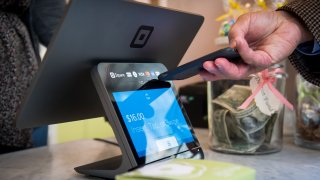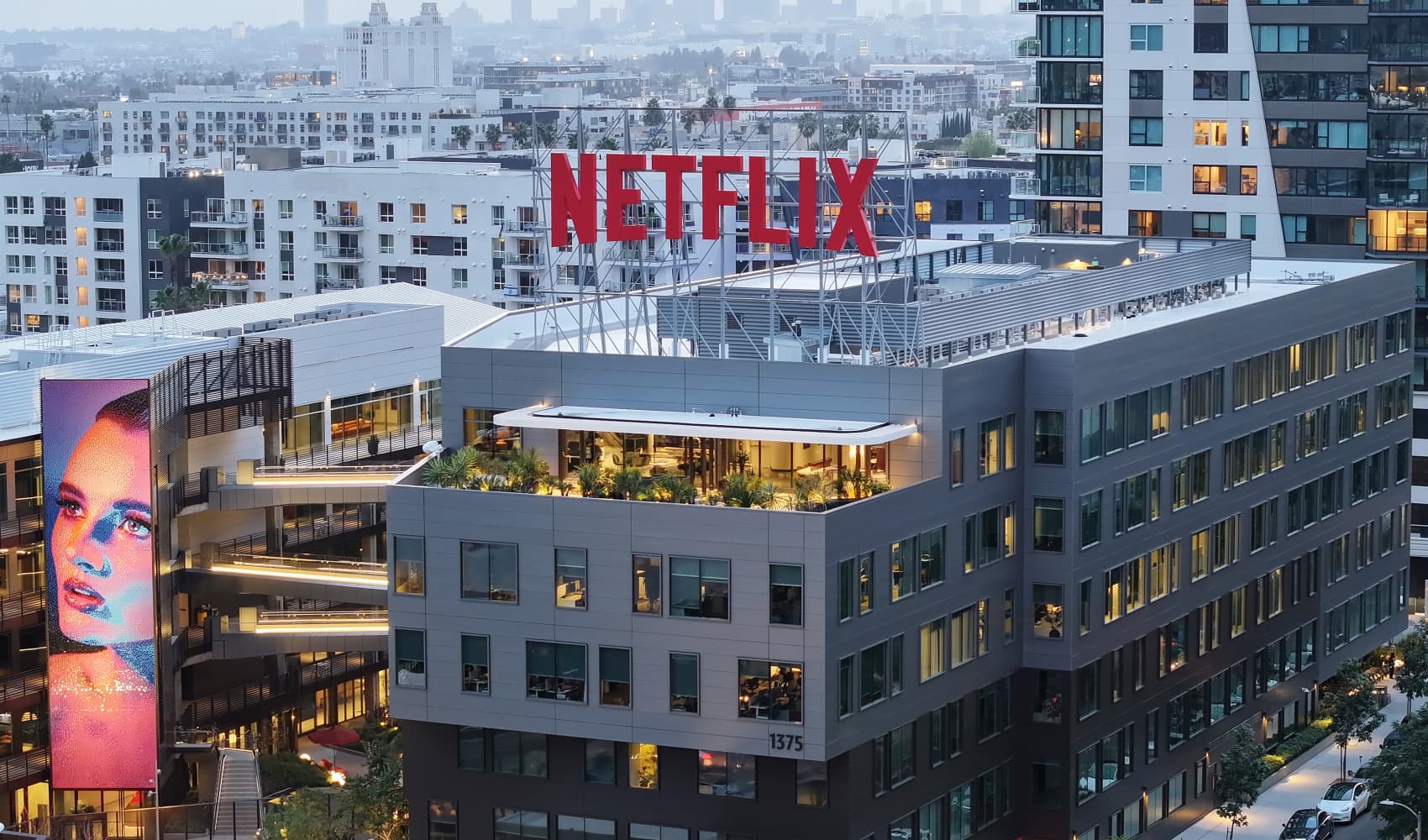
- Tap-to-pay transactions grew more than 30% over the past year, according to Visa.
- Nearly 50% of consumers say they will not shop at a store that doesn't offer a contactless way to pay.
The pandemic brought about a massive shift to digital payments — one that is unlikely to wane even when an increasing number of people feel comfortable doing more of their shopping in person.
The move to more robust digital payment methods was certainly happening well before the pandemic. But as stores shut down and consumers were forced to buy nearly everything online, contactless ways to pay increased dramatically.
In the U.S., Visa said in March its tap-to-pay transactions grew over 30% year-over-year. In fact, according to its survey of small business owners and consumers in eight countries, nearly half of consumers suggested that offering contactless payment methods is one of the most important safety measures stores can offer. Another 47% of consumers say they will not shop at a store that doesn't offer a contactless way to pay.
Get Southern California news, weather forecasts and entertainment stories to your inbox. Sign up for NBC LA newsletters.
The trend speaks to the health and safety concerns of both businesses and consumers, of course. But experts say the convenience, speed and security of digital payments will continue to be a must-have for consumers long after Covid recedes from the headlines.
"As countries around the world continue to increase tap-to-pay transaction limits, contactless payments are here to stay and their adoption will accelerate," said Rajat Taneja, president of technology at Visa. He says that in Europe, less than a year since contactless limits increased across the region, Visa has seen 1 billion additional touch-free transactions.
'Less personal, more digital'
Money Report
Guido Sacchi, chief information officer at payment technology and software solutions firm Global Payments, says the pandemic changed what consumers want at check-out. They are increasingly looking for a "less personal, more digital" interaction.
"Covid was a big catalyst for the adoption of digital payments and digital forms of commerce," he said.
Global Payments works with over 3 million customers all over the world, including Taco Bell, Starbucks, H&M, and J.P. Morgan. Before the pandemic, as retailers and other institutions first began to offer touchless payments, the initial goal was make the experience at the checkout counter more convenient and simple, Sacchi says. Customers could simply dip or swipe a debit or credit card.
The next iteration enabled a customer to simply tap their card, rather than dip or swipe it. That quickly evolved to having the "card" or payment method inside a smartphone so that a customer would never have to take out their wallet again. "All you have to do is tap your phone," he said.
When the pandemic shut down businesses early last year, the need for digital, touchless payments took off. Already retailers like Target and Starbucks were enabling customers to make payments through mobile apps. When consumers couldn't enter stores for health and safety reasons, they could still pay and have their purchases brought outside to their car or have them delivered.
The Vitamin Shoppe adopted touchless payments in the early days of the pandemic. Andrew Laudato, chief operating officer of the health and wellness retailer, said the company rushed to launch contactless payment options like Apple Pay and others. It also deployed technologies that enabled stores to provide digital receipts, and allowed customers to scan products themselves when they came into Vitamin Shoppe stores.
"When the pandemic came people didn't want to touch surfaces, they didn't want to pass over their credit or debit cards or punch in their pin on the keypad," Laudato said. The company had been planning to roll out mobile payments, but the pandemic fast-tracked the launch. "Our stores were contacting us, saying can you please accelerate this because a lot of customers are asking," he adds.
Accepting mobile payments such as Apple Pay and Google Pay required making them part of The Vitamin Shoppe's transaction flow on the backend, Laudato says. But from a customer perspective the offering was pretty simple. "Customers were already used to using their phone to pay for coffee or in New York City, to get on the subway, so they were pretty well trained when they started using it with us," he adds.
To complete the touchless experience, Vitamin Shoppe customers can now scan purchases themselves at the register, bag them and then tap their phone to pay and be out the door. "It can be a completely touchless experience and customers like it," he said.
Looking ahead, experts say omnichannel options that began in the pandemic — such as curbside pickup and QR code contactless ordering — are likely to remain strong along with touchless payments. According to Juniper Research, QR code payments will be the most used digital commerce method in terms of volume throughout the next five years, accounting for 27% of all digital commerce transactions in 2024.
"Just look at what restaurants did with replacing paper menus with QR codes," Sacchi said. "Consumers seem to like it, it feels safer, and it is much better for the business because it allows them to know more about the customer than if they just ordered from a paper menu and paid with a credit card."






